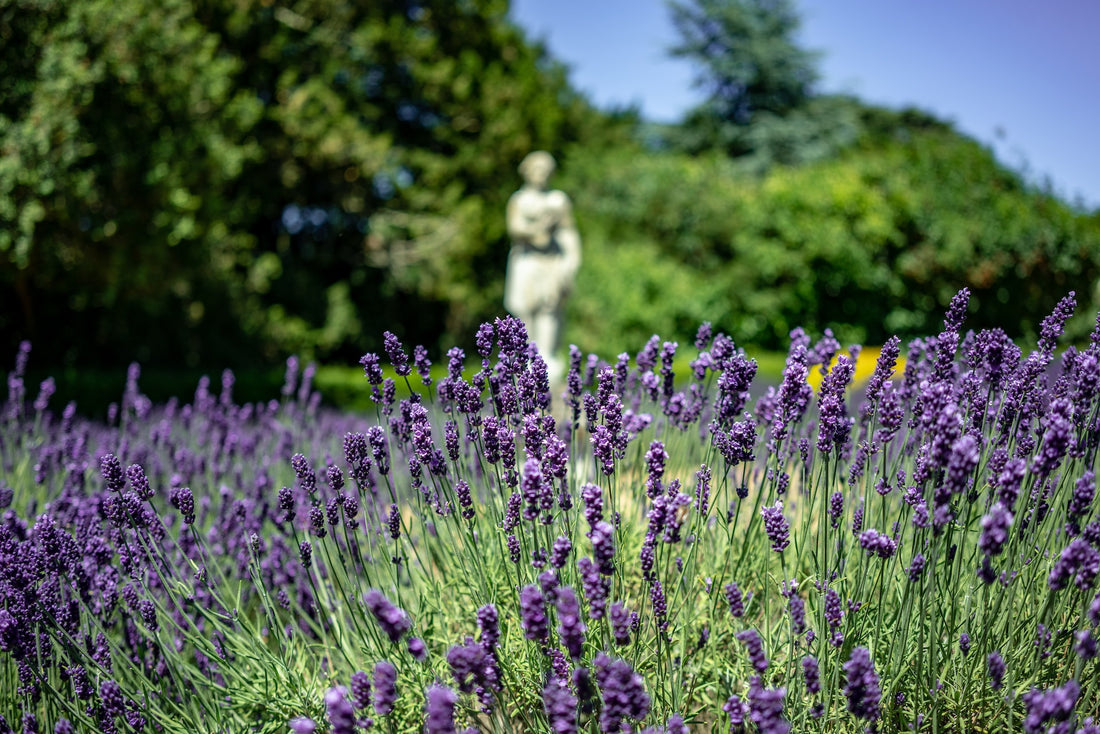We love having lavender in the garden for its ornamental flowers and strong aroma. It is often used in aromatherapy, skincare products, and even cooking. In the garden, it repels mosquitoes and attracts beneficial insects. These harvesting and use instructions apply to all types of lavender, English, French, and Spanish.
Timing is Everything
Knowing when to harvest lavender is crucial to preserve its fragrance and essential oil content. The ideal time for harvesting lavender is in the early spring, as it allows the plant to produce another flush of blooms later in the season. However, if you live in a frost-free climate where lavender blooms year-round, you can harvest small bunches throughout the year.
Harvest lavender in the early morning, once any dew has dried, but before the heat of the sun dissipates the essential oils. This ensures that you capture the maximum fragrance and therapeutic properties of the flowers.
Lavender Harvesting Steps
- Cut the flower stems just above the junction where two new leaves, blooms, or branches appear. Use clean, sharp shears or scissors.
- Be cautious not to cut into the woody part of the plant, as it may not recover.
- Harvest lavender in small bunches, tying them together with a rubber band to hang and dry later. Remember to leave some flowers behind for the bees to enjoy.
Drying Lavender
Avoid using quick-drying methods such as ovens or direct sunlight, as they can diminish the valuable volatile components and fade the color of the flowers. Instead, opt for slow drying at temperatures below 100F.
- Hanging Method - The most traditional and effective way to dry lavender is by hanging it upside down. Divide your harvested lavender into small bundles and secure them with rubber bands. Hang the bundles in a well-ventilated, shady area away from direct sunlight. Allow the lavender to dry naturally for about a week or until the flowers easily separate from the stems. This method preserves the vibrant color and aroma of the dried lavender.
- Dehydrator Method - Spread the lavender buds in a single layer on the dehydrator trays, making sure that they don't touch each other. Set the dehydrator to the lowest temperature setting, usually between 95°F to 105°F, and let it run for 24 to 48 hours. Check for dryness by crumbling a bud between your fingers. Once the lavender is completely dry, store it in an airtight container until ready for use.
- Baskets or Screens Method - Another option for drying lavender is to lay loose stems or buds in a single layer on airy baskets or screens. Ensure that the drying area is warm and dry, allowing for proper air circulation. This method may take approximately two weeks or more for the lavender to fully dry. You can use an herb drying rack to facilitate the process and maintain the quality of the dried flowers.
Storing Dried Lavender
Keep the dried lavender flowers in a tightly sealed glass jar to protect them from moisture and external odors. Avoid using plastic or metal containers, as they may affect the fragrance and quality of the dried flowers. With proper storage, dried lavender can remain viable for up to two to three years.
Uses For Dried Lavender
- Fragrance Sachets
- Cooking
- Aromatherapy and Beauty Products



